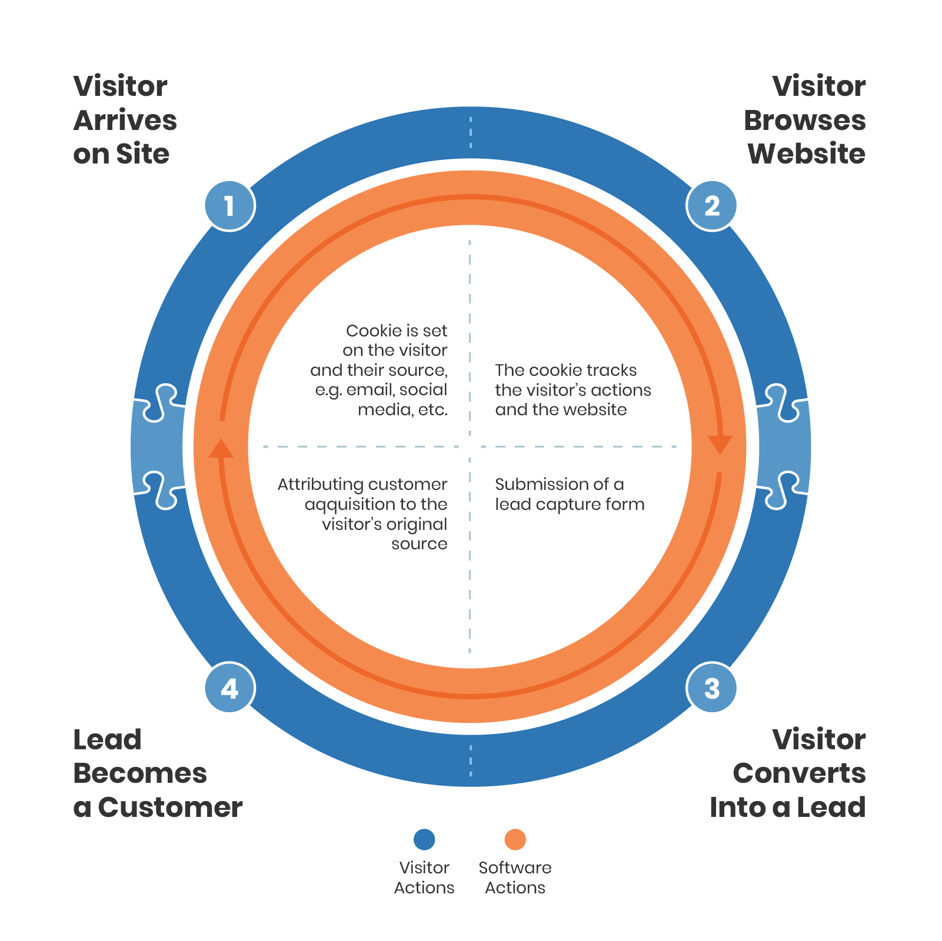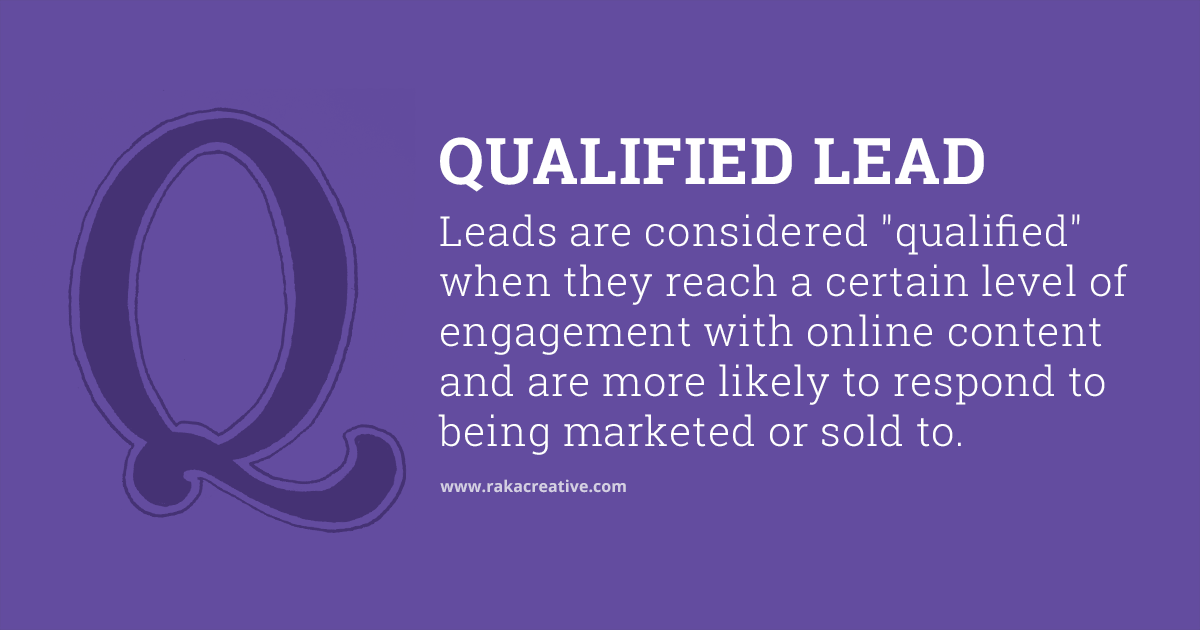It’s a tale as old as time. Marketing feels under-appreciated because it is constantly being asked to justify its efforts. Sales complains that it lacks good information to give leads that explains the product benefits in a clear and concise way. And neither team is talking about this to the other. Inbound marketing has done a lot to bridge this gap between marketing and sales. By being customer-focused, marketing can provide valuable content that answers leads’ questions. However, in many companies, there still remains a gap between sales won and the marketing efforts that helped get the sale started. That’s where closed loop marketing comes in.
Table of Contents
How closed loop marketing works
Isn’t closed loop marketing just cost-per-lead?
Closed loop marketing for lead generation
Smart cookies: closed loop marketing intelligence
Closing the loop
Eliminate friction
How closed loop marketing works
Closed loop marketing uses data and insights to connect sales team reporting to marketing activities and assets. By examining where the leads came from, how they engaged, and the nature of the closed sales, marketing can better understand what’s working and what’s not.
To do closed loop marketing effectively, companies must connect each lead, customer, and sales amount to the marketing initiative that created them. Marketing teams can not only use this information to show how they contribute to revenue, but it also arms them with valuable intel on the behaviors of customers along the buyers journey to use when designing future campaigns. Sales teams can also use this data to see what kind of messages attracted leads, helping them refine their approach.

Isn’t closed loop marketing just cost-per-lead?
Your company may already collect data and follow leads in an effort to calculate marketing return on investment. Cost per lead is a pretty common metric, mostly because it’s easy to execute. But it only tells part of the story.
Cost per lead = $ spent on advertising / # of leads
When evaluating cost per lead, companies are only looking at how much was spent to generate each lead. It tells you nothing about the quality of the leads. Digging deeper you can analyze cost per lead generated per channel, but again you only get part of the picture. Using a customer relationship management system (CRM), you can track how the lead came to your company, but you still don’t know which platform moved them to sale. Was it social media or the email nurturing campaign that led to their final decision to buy? Closed loop marketing gives you a more comprehensive picture of the lead’s journey from finding you online to buying than evaluating cost per lead can.
Closed loop marketing for lead generation
The first step in closed loop marketing is getting potential leads to your site. This is done through search engine optimization and having lots of well-written and well-produced content that answers people’s questions. Once they visit your site and view your blog post, video, or even the homepage, a cookie is set to monitor the visitor’s progress throughout the site. From there, the potential lead can be nurtured back to the site through remarketing, and then they hopefully return to a content offer valuable enough to entice them to provide their contact information and turn them into a lead.
Let’s look at the kinds of content you can use in this strategy.
Social media post
The viewer sees a post from your company and clicked to learn more. This can be registered as an initial contact, and remarketing can begin.
Blog content
Through a search, a viewer finds a blog post that directly answers a question they have. They go to the site and read the post. They could be prompted with a pop up for a coupon or a CTA for more info. Even if they don’t engage further, remarketing can be done.
Landing page
Finally, they get to a content offer landing page. Once they fill out a form, the user becomes a full fledged lead you can continue to nurture through email campaigns and other strategies.
Smart cookies: closed loop marketing intelligence
Tools like cookies, remarketing, and marketing automation software provide your marketing team with valuable intelligence about your website visitors. Not only are they getting web metrics like page traffic and how the visitor got to your page, they are also seeing how users use your site and what kind of content is bringing them back.
The trickiest part of closed loop marketing is making sure your company is connecting a visitor’s session with the lead information once he or she converted. To do this, you will need marketing and sales software like Salesforce and HubSpot. (We use HubSpot here at Raka.) Using these platforms, you can connect site visitor data with leads for a more comprehensive picture of your marketing tactics.
Closing the loop
Your company is putting all this effort into tracking users in hopes of converting them into leads and ultimately into sales. Knowing which campaigns worked (and which didn’t) is an important part in designing successful campaigns in the future.
At this point, you’re now tracking how users get to your site, whether it’s via search, email, or social media. You are also tracking visitors by using cookies, and you have successfully connected visitor information with leads. The final step in closed loop marketing is identifying the marketing efforts that brought in revenue. If you’ve already connected the lead to website visitor activity, it’s just a matter of tracking the sale to the lead to make the closed loop connection.
This can be done by connecting the sales CRM system with the marketing software your company uses through what is known as an application programming interface (API). HubSpot, in particular, has seamless integration between its sales and marketing software. When a member of a sales team enters a closed sale into their HubSpot CRM, it automatically gets attributed back to a campaign within their marketing hub. This allows users to browse through their various marketing efforts and see a direct dollar amount attached to each campaign they’ve run—making it easy to optimize future campaigns by placing more emphasis on activities that actually generate revenue for your company.
Eliminate friction

All this intelligence is great, but it’s meaningless unless your sales and marketing teams know how to use it. A good place to start is examining what keeps things from moving forward. These friction points in the sales process can include failing to follow up with leads or too much content that’s irrelevant to their needs. Identifying these problem areas enables your company to create content and tactics that eliminates friction and speeds up the sales process. Eliminating friction is the essence of the flywheel theory. Creating a flywheel for your company will ultimately help you communicate what you do and the benefits to the customer better, making your marketing efforts more efficient.
Here are some other steps you should take with your information to ensure you’re getting the most out of closed loop marketing.
Create more effective campaigns
Knowing which campaigns are generating the most revenue will help your marketing team develop similar messaging and content.
Get rid of ineffective campaigns
Just as valuable as seeing what works, is learning what doesn’t. Drop the campaigns that are not bringing in revenue and examine them for reasons why. Experiment with A/B testing to identify the messages, design features, and content type that fail to connect with users.
Creating reports
Wouldn’t it be great to see exactly how your marketing team has contributed to the company’s bottom line? Understanding how their efforts are helping convert—and the sales department fully on board with what marketing does—will make these teams so much more effective.
Closed loop marketing is a data-driven strategy rooted in inbound marketing. Adopting these strategies means investing in tools that can provide you with the right data, but it also requires buy-in to the inbound marketing methodology. If the director of sales is not fully onboard, achieving the company’s marketing goals will be that much harder. The great thing about connecting inbound marketing efforts to sales through closed loop marketing is that you can get real numbers connected to actual dollars. There’s no better way to get buy-in and be confident in your company’s marketing efforts.






